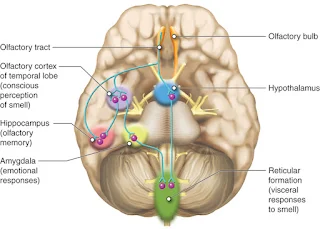Grasping Mind Cancers: Types, Side effects,
and Therapy Options
Mind cancers are strange developments of cells inside the cerebrum or encompassing tissues. While the expression "growth" frequently inspires dread, it's fundamental to comprehend that not all cerebrum cancers are harmful, and many can be effectively treated. Be that as it may, the area and size of the growth, too as its forcefulness, can essentially affect treatment and guess. In this article, we investigate the intricacies of mind cancers, including their sorts, side effects, and accessible therapy choices.
Kinds of Cerebrum Tumors:
Cerebrum growths can be grouped into two fundamental classifications: essential and optional (metastatic) growths.
1.Primary Cerebrum Tumors: These cancers begin inside the mind or its encompassing tissues. Essential cerebrum growths can be additionally ordered in light of the kind of cells from which they start:
>Gliomas: Emerging from glial cells, which support and safeguard neurons, gliomas are the most well-known kind of essential cerebrum growth. Models incorporate astrocytoma's, oligodendrogliomas, and glioblastomas.
>Meningioma's: These growths create from the meninges, the defensive layers of tissue that encompass the cerebrum and spinal rope. Meningioma's are generally harmless and slow-developing.
>Pituitary Tumors: Beginning from the pituitary organ at the foundation of the cerebrum, these growths can influence chemical creation and guideline.
>Medulloblastomas: Principally happening in kids, medulloblastomas are quickly developing cancers that foster in the cerebellum, the piece of the cerebrum liable for equilibrium and coordination.
2.Secondary (Metastatic) Cerebrum Tumors: These growths start from harmful cells that have spread (metastasized) to the mind from different pieces of the body, like the lungs, bosom, or colon. Metastatic mind growths are more normal than essential cerebrum growths and frequently require fundamental therapy for the hidden disease.
Side effects of Mind Tumors:
The side effects of a mind growth can fluctuate broadly contingent upon variables like the growth's area, size, and pace of development. Normal side effects of cerebrum growths might include:
1.Headaches: Constant or deteriorating cerebral pains, particularly joined by sickness, retching, or changes in vision, can be a side effect of a mind growth.
2.Seizures: Seizures, which might appear as spasms, muscle jerking, or loss of cognizance, can happen when a cerebrum growth influences the mind's electrical movement.
3.Cognitive Changes: Changes in mental capability, for example, cognitive decline, trouble concentrating, or disarray, may happen because of a cerebrum cancer influencing mind capability.
4.Motor or Tangible Deficits: Shortcoming, deadness, or shivering in the arms, legs, or face might happen on the off chance that a cerebrum growth influences the districts of the mind liable for engine or tactile capability.
5.Personality or Conduct Changes: Character changes, temperament swings, or modifications in conduct might be seen in people with mind growths, especially those influencing the front facing or fleeting curves of the cerebrum.
It's essential to take note of that these side effects are vague and can be characteristic of different neurological circumstances. An exhaustive clinical assessment, including imaging concentrates, for example, X-ray or CT filters, is important to precisely analyze a cerebrum cancer.
Treatment Choices for Cerebrum Tumors:
Treatment for cerebrum growths relies upon a few elements, including the sort, area, size, and grade of the cancer, as well as the singular's general wellbeing and therapy objectives. Normal treatment choices for cerebrum cancers might include:
1.Surgery: Careful evacuation of the cancer, known as a craniotomy, might be prescribed to extricate however much of the growth as could reasonably be expected while protecting encompassing sound mind tissue.
2.Radiation Therapy: Radiation treatment utilizes high-energy bars to target and obliterate destructive cells. It very well might be utilized as an essential treatment for inoperable cancers, as adjuvant treatment following a medical procedure, or to ease side effects in cutting edge cases.
3.Chemotherapy: Chemotherapy medications might be managed orally, intravenously, or straightforwardly into the cerebrospinal liquid to target and kill disease cells. Chemotherapy might be utilized alone or in blend with a medical procedure and radiation treatment.
4.Targeted Therapy: Designated treatment medications might be utilized to explicitly target malignant growth cells in view of their hereditary or sub-atomic qualities. These medications can upset the flagging pathways that advance growth development and endurance.
Notwithstanding these standard medicines, clinical preliminaries might be accessible for people with cerebrum growths, offering admittance to novel treatments and trial medicines.
Conclusion:
Cerebrum cancers present complex difficulties for patients and medical care suppliers the same. Early discovery, exact analysis, and suitable treatment are basic for enhancing results and working on personal satisfaction for people impacted by mind cancers. Propels in clinical imaging, careful methods, radiation treatment, and designated treatments have altogether further developed therapy choices and endurance rates for some sorts of cerebrum cancers. By bringing issues to light of the side effects and therapy choices for mind growths, we can enable people to look for opportune clinical consideration, access viable medicines, and explore their excursion with certainty and trust.

Comments
Post a Comment